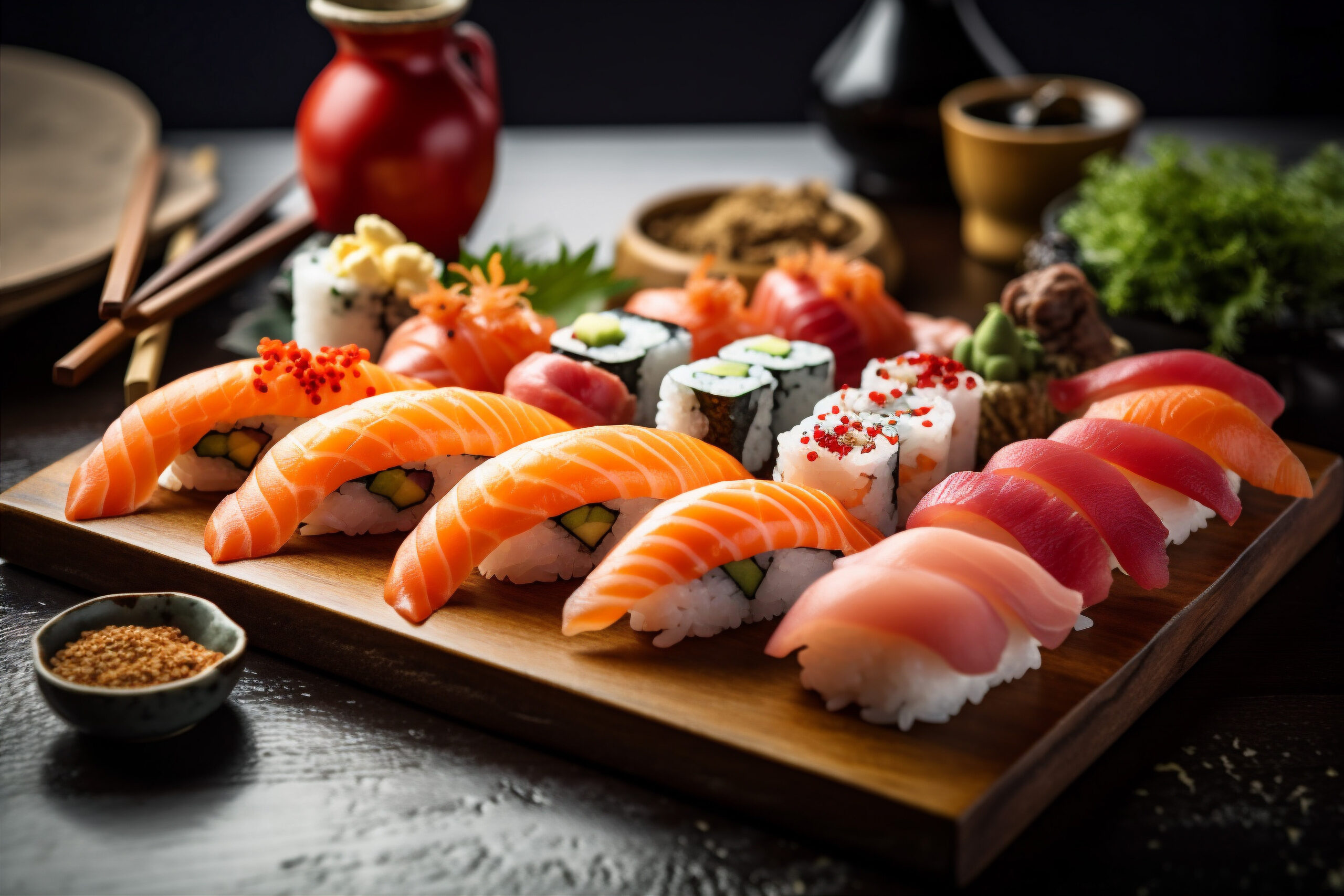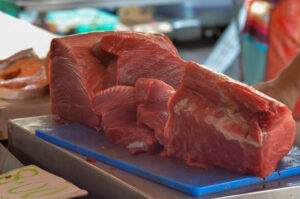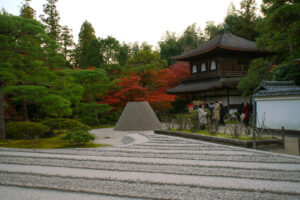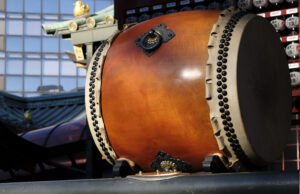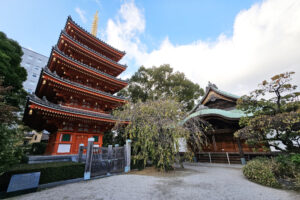In the heart of Japan, a culinary revolution unfolds, where every dish tells a story, every flavor carries a history, and every presentation is a masterpiece. This is a land where food transcends the boundaries of mere sustenance to become an art form celebrated across the globe. "Savoring Artistry: Japan’s Culinary Canvas Unveiled" invites you on a gastronomic journey to discover the exquisite tastes, profound traditions, and innovative future of Japanese cuisine. Through this exploration, we peel back layers of culinary wisdom to reveal how Japan’s chefs and food artisans craft experiences that tantalize the senses, nourish the soul, and honor the rich tapestry of their cultural heritage.
Unveiling Japan’s Culinary Masterpieces
In Japan, every dish is a homage to the meticulousness and dedication of its creator. From the precision-cut sashimi to the intricate designs of wagashi, Japanese culinary masterpieces are a testament to the country’s unwavering commitment to excellence. These dishes are not just meals but expressions of seasonal beauty and the chef’s mastery over his craft. The journey into Japan’s culinary landscape uncovers a world where food reflects the delicate balance of nature and the deep-rooted philosophy of harmony, respect, and purity. It’s a realm where eating becomes a transcendent experience, inviting one to savor each moment and flavor with mindfulness and appreciation.
The Roots of Japanese Gastronomy Explored
The history of Japanese gastronomy is as rich and layered as the flavors found within its cuisine. It is a history shaped by the geographical isolation of the islands, the distinct four seasons, and a deeply ingrained respect for nature. From the early adoption of rice cultivation to the influence of Buddhist vegetarian traditions and the sophisticated court cuisine of the Heian period, every epoch has contributed to the evolution of Japanese food. The introduction of Buddhism in the 6th century, for instance, profoundly impacted dietary habits, leading to the development of unique vegetarian dishes that are still celebrated today. Furthermore, the arrival of Portuguese and Dutch traders in the 16th century introduced new cooking methods and ingredients, including tempura, thus enriching the culinary tapestry of Japan.
The Zen of Kaiseki: More Than a Meal
Kaiseki, the epitome of Japanese haute cuisine, embodies the zenith of culinary artistry and philosophical depth. Originating from the tea ceremony’s simple meals, kaiseki has evolved into a sophisticated dining experience that celebrates seasonal ingredients, artful presentation, and the subtle balance of flavors. A kaiseki meal is a journey through the seasons, comprising multiple courses that highlight the freshest local produce and seafood. Each dish is carefully designed to evoke a sense of place and time, with chefs often using plates and utensils that complement the aesthetic and thematic elements of the meal. Kaiseki is not just about eating; it’s an immersive experience that engages all senses, inviting diners to appreciate the fleeting beauty of the natural world.
Sushi Unrolled: An Artistic Tradition
Sushi, perhaps the most iconic of Japanese culinary exports, is much more than just raw fish on rice. It is an art form steeped in history, technique, and tradition. The origins of sushi can be traced back to the preservation methods of Southeast Asia, where fermented rice was used to keep fish edible for longer periods. Today, sushi has evolved into a sophisticated cuisine that celebrates the quality and flavor of ingredients. The art of sushi-making demands years of training, a deep understanding of the fish, and the skill to balance flavors and textures. From the selection of the rice and its seasoning to the slicing of the fish and the final presentation, every step is executed with precision and care, resulting in a harmonious dish that delights both the palate and the eyes.
From Tempura to Tofu: A Flavorful Journey
The diversity of Japanese cuisine is vividly illustrated in the journey from tempura to tofu. Tempura, with its light, crispy batter, offers a delicate way to savor the freshness of seafood and vegetables, while tofu, with its subtle flavors and versatile textures, highlights the Japanese mastery of simplicity. Both dishes, though seemingly different, embody the principles of Japanese cooking: the emphasis on seasonal ingredients, the careful attention to technique, and the pursuit of balance and purity. Tempura, originally introduced by Portuguese missionaries, has been embraced and refined by Japanese chefs, becoming a beloved dish that perfectly encapsulates the fusion of foreign influences and local culinary traditions. Tofu, on the other hand, has been a staple of Japanese diet for centuries, celebrated for its health benefits and its ability to absorb flavors, making it a versatile ingredient in a wide array of dishes.
The Delicate Craft of Wagashi
Wagashi, traditional Japanese sweets, are miniature artworks that encapsulate the essence of Japan’s seasons and festivals. Made from plant-based ingredients such as azuki beans, rice flour, and agar, wagashi are not just treats for the palate but feasts for the eyes. The craft of making wagashi is one of precision and creativity, with artisans shaping these sweets into intricate designs that reflect the beauty of nature. Whether it’s a delicate cherry blossom for spring or a colorful maple leaf for autumn, each wagashi tells a story of the season. Enjoyed with a bowl of bitter matcha tea, wagashi offer a moment of contemplation and savoring, embodying the Japanese aesthetic of wabi-sabi, the beauty of imperfection and transience.
Sake: Japan’s Sacred Libation Unveiled
Sake, Japan’s famed rice wine, holds a sacred place in the country’s culture and cuisine. Brewed using only rice, water, yeast, and koji mold, sake is a testament to the Japanese pursuit of purity and perfection. The process of making sake is a labor of love, involving intricate steps to polish the rice, ferment the mash, and carefully age the final product. The result is a beverage that ranges from sweet to dry, with complex flavors and aromas that reflect the terroir of its origin. Sake is not just a drink; it’s a cultural icon, integral to ceremonies and celebrations, and a perfect companion to a wide array of Japanese dishes. Exploring the world of sake is a journey into the heart of Japan’s culinary traditions, where history, art, and craftsmanship converge.
Umami Unleashed: A Taste Unique to Japan
Umami, the so-called fifth taste, is a concept that has long been ingrained in Japanese cuisine. It is a rich, savory taste that deepens flavor and creates a harmonious balance in dishes. Ingredients like kombu (kelp), shiitake mushrooms, soy sauce, and miso are rich in umami and form the backbone of Japanese cooking. These ingredients not only add depth and complexity to dishes but also embody the essence of umami, elevating the dining experience. The recognition of umami has revolutionized culinary arts worldwide, but in Japan, it has always been a fundamental element that shapes the nation’s palate and culinary practices.
The Role of Aesthetics in Japanese Cuisine
In Japanese cuisine, aesthetics play as crucial a role as taste and nutrition. The presentation of food is meticulously planned, with attention to color, shape, and arrangement, reflecting the natural beauty and seasonal changes. This emphasis on aesthetics extends to the choice of tableware, which complements the visual appeal and theme of the meal. The Japanese belief that food should be enjoyed with all senses is evident in the harmonious presentations, where dishes are not only delicious but visually stunning. This attention to detail enhances the dining experience, making each meal a celebration of both the artistry of the chef and the bounty of nature.
Seasonality and Sustainability in Japanese Cooking
Seasonality lies at the heart of Japanese cuisine, with chefs and home cooks alike celebrating the freshest ingredients at their peak. This deep respect for nature’s cycles not only ensures the best taste and nutrition but also promotes sustainability. The Japanese culinary tradition of "shun" (seasonal eating) encourages the consumption of locally sourced, seasonal foods, reducing the environmental impact of transportation and supporting local farmers. Furthermore, traditional methods of preservation such as pickling and fermenting allow seasonal ingredients to be enjoyed throughout the year, minimizing waste and enhancing flavors. This ethos of sustainability and respect for nature is a guiding principle in Japanese cooking, reflecting a broader cultural reverence for the natural world.
The Future of Japanese Culinary Artistry
As the world becomes increasingly globalized, Japanese cuisine continues to evolve, embracing new influences while staying rooted in tradition. Chefs in Japan and around the world are experimenting with local ingredients and modern techniques to create innovative dishes that still reflect the essence of Japanese culinary philosophy. At the same time, there is a growing movement towards sustainability, with an emphasis on organic farming, ethical seafood sourcing, and waste reduction. The future of Japanese culinary artistry looks bright, with a new generation of chefs and food artisans leading the way in crafting dishes that are respectful of tradition yet forward-looking, ensuring that Japan’s culinary heritage continues to thrive in an ever-changing world.
Where to Experience Japan’s Culinary Best
Japan offers a myriad of opportunities to experience its culinary wonders, from the bustling food markets of Tokyo and Osaka to the serene tea houses of Kyoto. For those seeking the pinnacle of Japanese cuisine, Michelin-starred restaurants offer meticulously crafted kaiseki meals that are both a feast for the palate and the eyes. Sushi enthusiasts can head to the famed Tsukiji Market to enjoy the freshest catch of the day. Meanwhile, traditional inns (ryokan) provide a taste of regional specialties in settings that hark back to Japan’s storied past. For a deeper dive into the world of Japanese food, cooking classes and food tours offer hands-on experiences that not only teach the techniques but also the philosophy behind this exquisite cuisine. No matter where the journey takes you, Japan’s culinary landscape promises an adventure that will delight and inspire.
Japan’s culinary canvas is a vibrant tapestry woven from the threads of tradition, innovation, and the profound respect for nature that characterizes Japanese culture. As we’ve journeyed through the artistry, history, and future of Japan’s gastronomy, it’s clear that to experience Japanese cuisine is to partake in a rich cultural heritage that is both preserved and ever-evolving. From the serene rituals of kaiseki to the bustling sushi counters of Tokyo, Japan’s culinary world invites us to savor each bite, cherish each season, and celebrate the art of food. As we look forward to the future of Japanese culinary artistry, one thing remains certain: the spirit of discovery, respect, and appreciation that defines this cuisine will continue to inspire food lovers around the globe.
